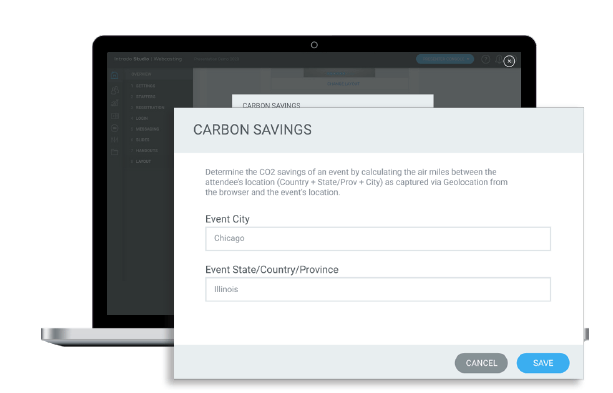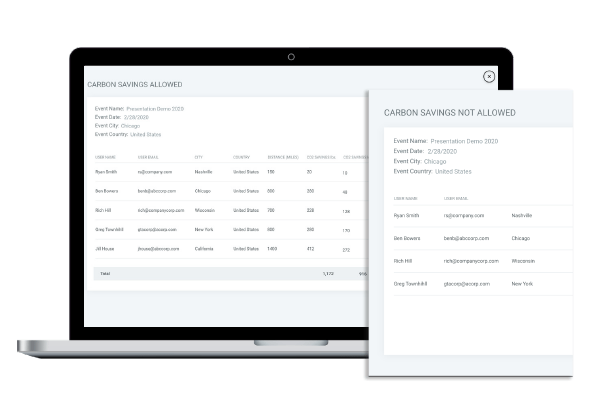Introducing one of our most exciting additions to the Notified Event Cloud: our carbon savings feature.
This groundbreaking tool will allow you to calculate, display and report on the environmental impact of your webinar or virtual event, so you can demonstrate how you are contributing to the reduction of your organization’s carbon footprint.
In the world we live in, we know that virtual events and webcasts are more important than ever before. The use of video for marketing purposes will only continue to increase. But now, you can also get a clear understanding how you’re helping the environment by hosting or attending an online event.
The panel will allow you to display real-time carbon savings across an entire event, with individual attendees able to see their own contributions as well.
How Does the Notified Carbon Savings Feature Work?
While this is all very exciting, we’ve had many people reach out to us about how the savings are calculated. That’s what I want to share with you here.
We use a simple equation to calculate each attendee’s carbon savings, then add those numbers together to determine the overall event savings.
That equation is as follows:

When hosts first set up their event, they select a “location;” this is typically the city where the event would be held if attendees were visiting in person or the location of a company’s headquarters.

Each attendee’s “miles” are calculated based on their distance from that location, which is determined when attendees allow the platform to access their device’s location.*
Those miles are multiplied by 53.3 – the average amount of CO2 generated per mile by an airplane. That number is then divided by 150 (the average number of passengers on a plane) to determine individual savings.
For example: If I were in New York attending a virtual event hosted in Chicago, my carbon savings would be a little over 280 lbs. New York is 788.9 miles from Chicago, so: 788.9 X 53.3 /150 = 280.32.
This feature allows attendees to see firsthand how they are contributing to fewer CO2 emissions, and it allows hosts to actively track and report on their environmental impact.
After the event concludes, hosts can download reports that allow them to view the event’s carbon savings and individual savings. They can even get a list of those attendees who did not opt to share their locations.

Take Your Event to the Next Level
We’ve known for a long time that virtual events and webcasts are greener and more sustainable when it comes to connecting with audiences around the world. But now, we can actually prove and document their effectiveness.
To learn more about our event solutions, contact us for a demo.
* Note: The calculation of users' locations is an estimate, and VPN settings can alter the actual location of a user.
